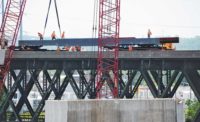The advent of autonomous vehicles (AVs), ride-sharing services, and other culture and technology trends portends transformative changes to the U.S. transportation system. While the precise effects of these dynamics have yet to be determined, infrastructure planners and owners need to prepare for a more multimodal, consumer-driven future
Governments must transition from infrastructure providers “and learn how to be in the mobility management business,” Los Angeles Dept. of Transportation General Manager Seleta Reynolds told participants at the Nov. 12 policy summit in Washington, D.C. sponsored by the Eno Center for Transportation, a non-profit think tank also based there.
“Our infrastructure will have to manage the fleet in a way it hasn’t before,” Reynolds said, adding that transportation agencies face a “painful period,” when AVs will be sharing the road with older, conventional vehicles. That means learning and applying new infrastructure design and administrative tools for a future that she said will be more inclusive of other modes, particularly in urban areas.
Transportation agencies already are preparing, said Bud Wright, executive director of the American Association of State Highway and Transportation Officials (AASHTO). He told attendees that state DOTs now are moving toward flexibility in infrastructure design.
“They’re operating with constrained resources and doing things for practicality,” Wright said. “It’s not just for passenger-car movements but also freight, transit, cycling and pedestrians.”
Nevertheless, a more diverse set of infrastructure users is almost sure to include conflict. “Everyone wants their own mode to be [the] priority,” noted H. Gene Hawkins, Texas A&M civil engineering professor. “But there is still only a limited amount of pavement.”
Technology may help to manage the very changes it is driving. Rit Aggarwal, former director of New York City’s Office of Long-Term Planning, characterized the AV as “one of the biggest opportunities for safety and quality of life.”




Post a comment to this article
Report Abusive Comment